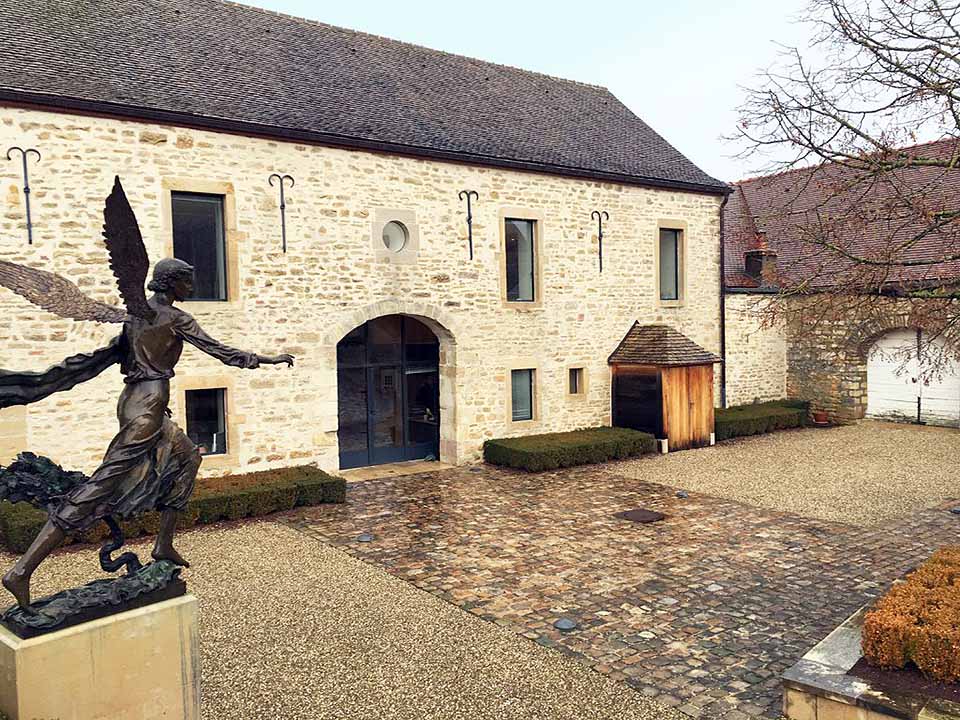
Now then, how about a decent bottle of red Burgundy? This morning, I was looking through the wine catalogue of Berry Bros & Rudd, which is the oldest wine and spirit merchant in Britain. The company has been at 3 St. James’s Street, London since 1698. They currently have in stock a few bottles of 2017 Vosne-Romanée from the Premier Cru Burgundy vineyard of Aux Malconsorts, one of the most highly regarded in the region. The small community of Vosne-Romanée is one of Burgundy’s brightest stars and produces the finest and most expensive Pinot Noir in the world. You can have this exceptional wine for a mere £1,250 which at today’s rate of exchange works out around 53,000 Thai baht. From Bordeaux, the 1971 vintage of Château Petrus currently sells for around £3,000 and the 1971 Domaine de la Romanée-Conti from Burgundy can be yours for a staggering £23,000. “And that’s for a case of twelve?” I hear you tentatively enquire. Well, no actually. That’s the price for one bottle. And of course, being Thailand, you can add almost half as much again for shipping, duty and taxes.
So why is that top-quality vintage wines are so frighteningly expensive? The answer is rather complicated but I’d suggest that it boils down to two main reasons. The first reason is that top-quality wine is expensive to make. There’s an old saying in the wine trade that if you want to make a small fortune in wine, start with a big one. Wine-making equipment is notoriously expensive. Even the oak barrels for storage can cost hundreds if not thousands of dollars. French wine law stipulates that only Pinot Noir may be used in red Burgundy, a grape which is tricky to grow at the best of times. In the region’s unpredictable climate, Pinot Noir can sometimes refuse to ripen properly and a sudden hail storm can destroy the entire crop in minutes. The most exalted vineyards such as Aux Malconsorts are comparatively small, so there’s a limit to the annual output and mass-harvesting methods are impossible. Harvesting is done by hand-picking the grapes one by one – sometimes at night when it’s cooler, and this bumps up wage costs. In one memorable year at Château Petrus in Bordeaux, helicopters were famously used to help surplus moisture evaporate from the berries. This kind of thing doesn’t come cheaply.
The second reason is due to the law of supply and demand. This ensures that prices rise when many people want a scarce commodity. Top quality Burgundies are some of the most expensive wines in the world. There’s an increasing demand for them too, especially from China’s nouveau-riche and demand far exceeds supply. Winemakers are free to sell their products for whatever amount they think the market will bear. Wine becomes too expensive only when people are not willing to pay for it. But if people continue to fork out huge sums for a specific bottle of wine, it wouldn’t make much economic sense to reduce the price.
This is also phenomenon known as “perceived value”. Burgundy especially attracts high prices simply because it’s Burgundy. This is particularly true when it comes to items that are deemed to be luxury goods. British wine critic Jancis Robinson says about wine quality, “Price is an extremely unreliable guide…what a wine sells for often has more to do with advertising hype and marketing decisions than the quality contained in the bottle.”
The prices I quoted earlier fade into insignificance compared to some of the eye-watering prices paid for rare wines at auction. This is really when the law of supply and demand provides spectacular outcomes. Some wines sold at auction are not only rare, they might be memorable vintages or linked in some way to historical events or famous people. In 2006, some bottles of Bordeaux, the 1945 Château Mouton-Rothschild sold for $310,000 per bottle because frost in early May of 1945 reduced the vintage to its smallest since 1915. At the same time, grapes were unusually ripe and produced an exceptional wine. In 2010, some bottles of 1869 Château Lafite-Rothschild fetched nearly $233,000 each on the grounds that they were the first vintage bottled at Lafite and the first vintage under the Rothschild ownership.
The world record for the most expensive bottles of wine sold at auction was broken twice in 2018 at a Sotheby’s sale in New York. The wine came from Burgundy’s Domaine de la Romanée-Conti, known as DRC in the wine trade and respected for its centuries-long reign as the most hallowed estate in Burgundy. The 1945 vintage is a rare one, because in that year, early frosts reduced the crop size and at the end of June powerful winds damaged parts of the Côte de Beaune, bringing the crop size down even further. However, the summer was mostly hot and dry with intermediate rain at the right moments producing an exceptional wine, though only six hundred bottles were produced. It was an outstanding vintage and the legendary wines have become exceptionally rare. The two bottles of 1945 Romanée Conti fetched $496,000 and $558,000 respectively. For security reasons, the name of the buyer was withheld but reported to be a private collector in Asia. And just in case you are wondering; no, it wasn’t me.
 |
 |
 |





